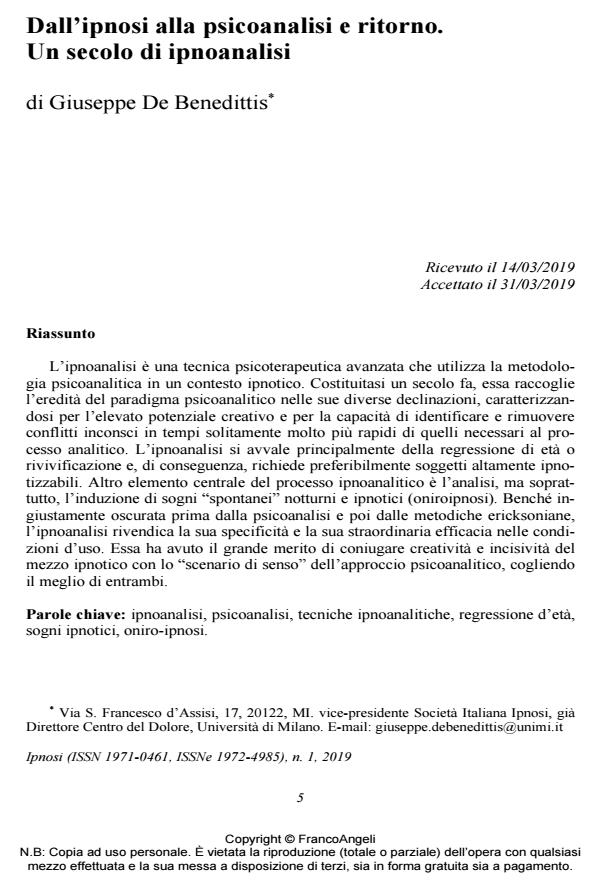From hypnosis to psychoanalysis and back. A century of hypnoanalysis
Journal title IPNOSI
Author/s Giuseppe De Benedittis
Publishing Year 2019 Issue 2019/1
Language Italian Pages 14 P. 5-18 File size 180 KB
DOI 10.3280/IPN2019-001001
DOI is like a bar code for intellectual property: to have more infomation
click here
Below, you can see the article first page
If you want to buy this article in PDF format, you can do it, following the instructions to buy download credits

FrancoAngeli is member of Publishers International Linking Association, Inc (PILA), a not-for-profit association which run the CrossRef service enabling links to and from online scholarly content.
Hypnoanalysis is an advanced psychotherapeutic technique that utilizes the psychoanalytic methodology in a hypnotic context. Born a century ago, it brings together the legacy of the psychoanalytic paradigm in its various forms and it is characterized by a high creative potential and by the ability to identify and re-move unconscious conflicts in times usually much faster than those necessary for the analytic process. Hypnoanalysis mainly uses age regression or revivification and, therefore, preferably requires highly hypnotizable subjects. Another central element of the hypnoanalytic process is the analysis, and mostly important, the induction of nocturnal "spontaneous" and hypnotic dreams (oniro-hypnosis). Alt-hough unjustly obscured first by psychoanalysis and then by ericksonian methods, hypnoanalysis claims its specificity and its extraordinary effectiveness in the con-ditions of use. It has had the great merit of combining creativity and incisiveness of the hypnotic medium with the "search for meaning" of the psychoanalytic ap-proach, capturing the best of both.
Keywords: Hypnoanalysis, psychoanalysis, psychoanalytic techniques, age regres-sion, hypnotic dreams, oniro-hypnosis.
- La raffigurabilità psichica: il potere terapeutico e conoscitivo dell'immaginario Valter Santilli, in IPNOSI 2/2022 pp.69
DOI: 10.3280/IPN2021-002004
Giuseppe De Benedittis, Dall’ipnosi alla psicoanalisi e ritorno. Un secolo di ipnoanalisi in "IPNOSI" 1/2019, pp 5-18, DOI: 10.3280/IPN2019-001001